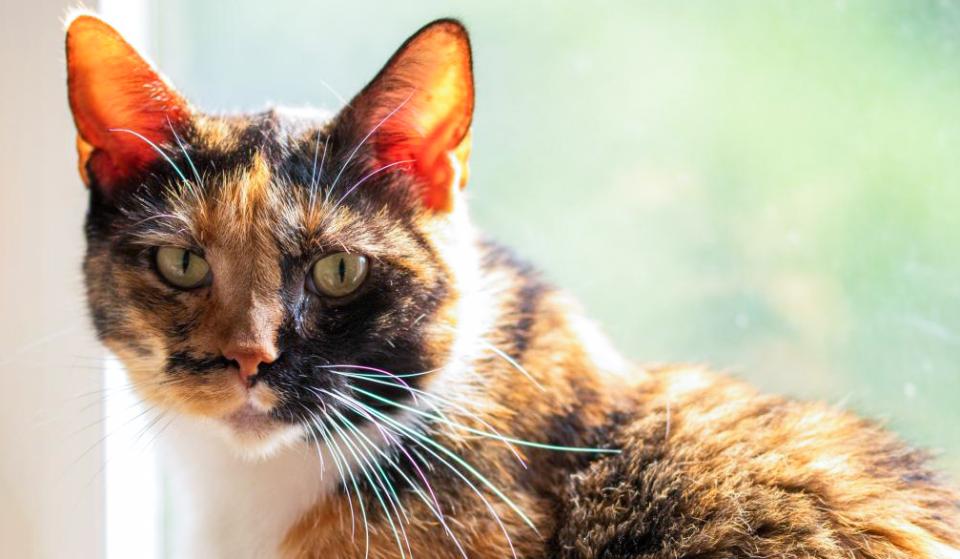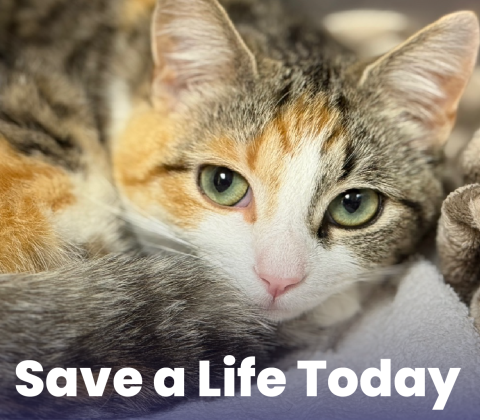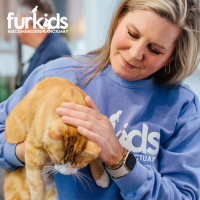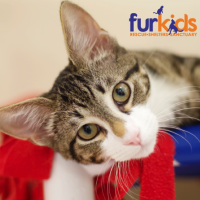
FIV
If a kitty has tested positive for FIV, it is not the death sentence that veterinarians used to mistakenly think it was. FIV can compromise the cat's immune system as cats get older. Since FIV takes years to affect a cat’s health, most FIV+ cats live long, healthy lives with relatively no symptoms at all. Respiratory infections, cuts, and gum disease may take longer to heal than in non-FIV cats. Treat any secondary problems as soon as they arise, and don’t wait for seemingly small symptoms to clear up on their own.
FIV cannot be spread to humans or other animals.
FIV is not easily passed between cats and cannot be spread in litter boxes, water and food bowls, or when snuggling and playing. FIV is primarily spread through deep, penetrating bite wounds in which the fighting is so severe that blood is transferred between two cats, such as when unneutered males fight over females. In unspayed/unneutered cats, FIV can be spread by mating or having kittens.
FIV cats CAN live with non-FIV cats.
As long as the cats are spayed/neutered, FIV+ cats can live safely with other cats. Cats cannot transmit FIV with normal behaviors like cleaning each other or eating out of the same food/water bowls. Even wrestling or light biting (not deep wounds) will not transmit FIV. So yes, most FIV+ cats can live normal comfortable lives with other FIV- cats. Introduce cats slowly and see www.fundamentallyfeline.com and many other websites about how to successfully integrate a new cat into the home.
FIV+ cats CAN live outdoors with other cats.
Sometimes people worry about whether FIV will spread through feral cat colonies, but this is unjustified as long as the FIV+ cat is spayed/neutered. Just as FIV+ cats live safely indoors with non-FIV cats, they can live outdoors with non-FIV cats.
Unfortunately, some vets are unaware of current research and best practices. Therefore, if any vet suggests euthanasia based on FIV, decline and contact us for other options.
You can learn more about FIV here.
FeLV
FeLV is a retrovirus virus that can suppress a cat’s immune system, but 70% of cats with FeLV are able to resist infection and eliminate the virus on their own. Outside of the body, FeLV can only live a few hours.
The FeLV test produces a lot of false positives.
Considering this, it’s entirely possible that the cat does not have FeLV at all. Every cat/kitten should be tested twice, at a minimum of 60 days apart between tests. Sadly, tens of thousands of cats have been killed based on an inaccurate test, and many more killed simply because veterinarians did not understand the disease.
FeLV cannot be spread to humans, dogs, or other animals.
FeLV is only passed between cats.
FeLV cats CANNOT live indoors with non-FeLV cats.
It can be spread through blood, saliva, urine, and feces. FeLV can also spread through the shared use of litter boxes and food bowls.
FeLV cats CAN live with non-FeLV cats outdoors in their original neighborhood or their original feral colony.
Studies by leading feral cat expert and veterinarian Dr. Julie Levy as far back as 2004 prove that removing FeLV cats from feral colonies does NOT affect the infection rate of the colony, either because of previous exposure or other unknown factors. Testing healthy community cats for FeLV is not recommended.
FeLV testing should be done with a plan to help the cat if she tests positive, not to end her life.










_200_49.png)



_200_175_75.JPEG)











